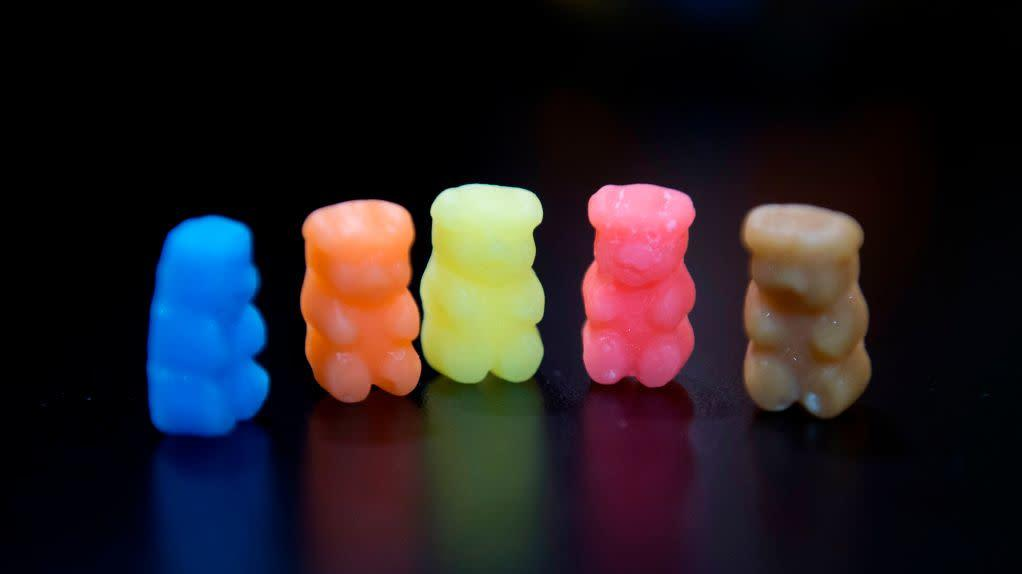What Better Way To Learn Genetics Than With Gummy Bears?
Remember learning about genetics for the first time in biology class? I myself don't remember much, aside from the traumatic time we had to dissect a pregnant rat (I vividly recall the smell of formaldehyde and do not wish to smell it ever again). The only other thing I vaguely remember were those squares we had to fill in. Punnett squares. Remember those? What a pain in the ass. These are two of many reasons why I never became a doctor.
Real genetics are a lot more complicated and don't fall quite so neatly into those Punnett squares, unfortunately. You might think that your genetic composition would be as simple as being an even quarter mix of each of your grandparents blended into one human being. But in reality, processes like genetic recombination shake things up considerably.
Science Alert used gummy bears to show a graphic representation of how genetics can work down the line, inspired by this tweet from NYU neuroscience prof Jay Van Bavel, who tweets as @jayvanbavel:
Explaining genetics through gummybears pic.twitter.com/vdO4jga26e
— Jay Van Bavel, PhD (@jayvanbavel) August 28, 2020
It is pretty adorable. And delicious. Because who doesn't love the idea of using a handful of gummy bears to depict your ancestry? It's not exactly perfect because, according to Science Alert, gummy bears don't convey dominant or recessive traits (the uppercase letters in a Punnett square are dominant, while the lowercase ones are the recessive ones, if you've forgotten). Still, it's something, and in the end, you'll be shoving your weirdo genetic mishmash monster gummy bears right into your face; really, there are few things better than a science experiment that you can end up eating later. Plus candy is a great way to get kids (and adults, for that matter) to pay attention. Maybe if we'd used them in my biology class, I would be a doctor today.
